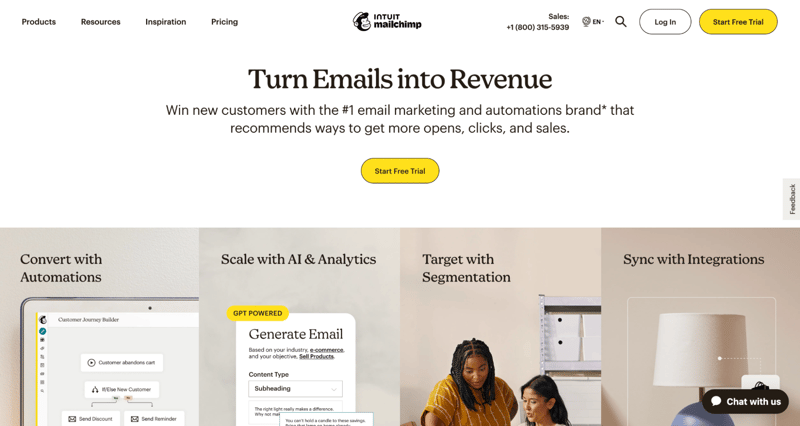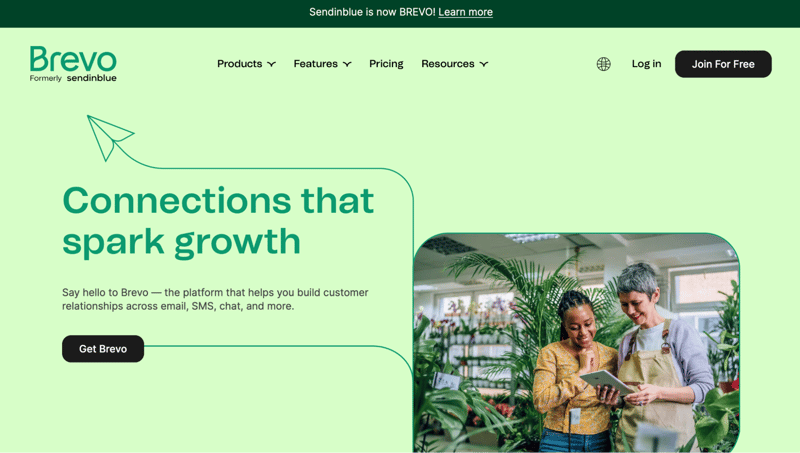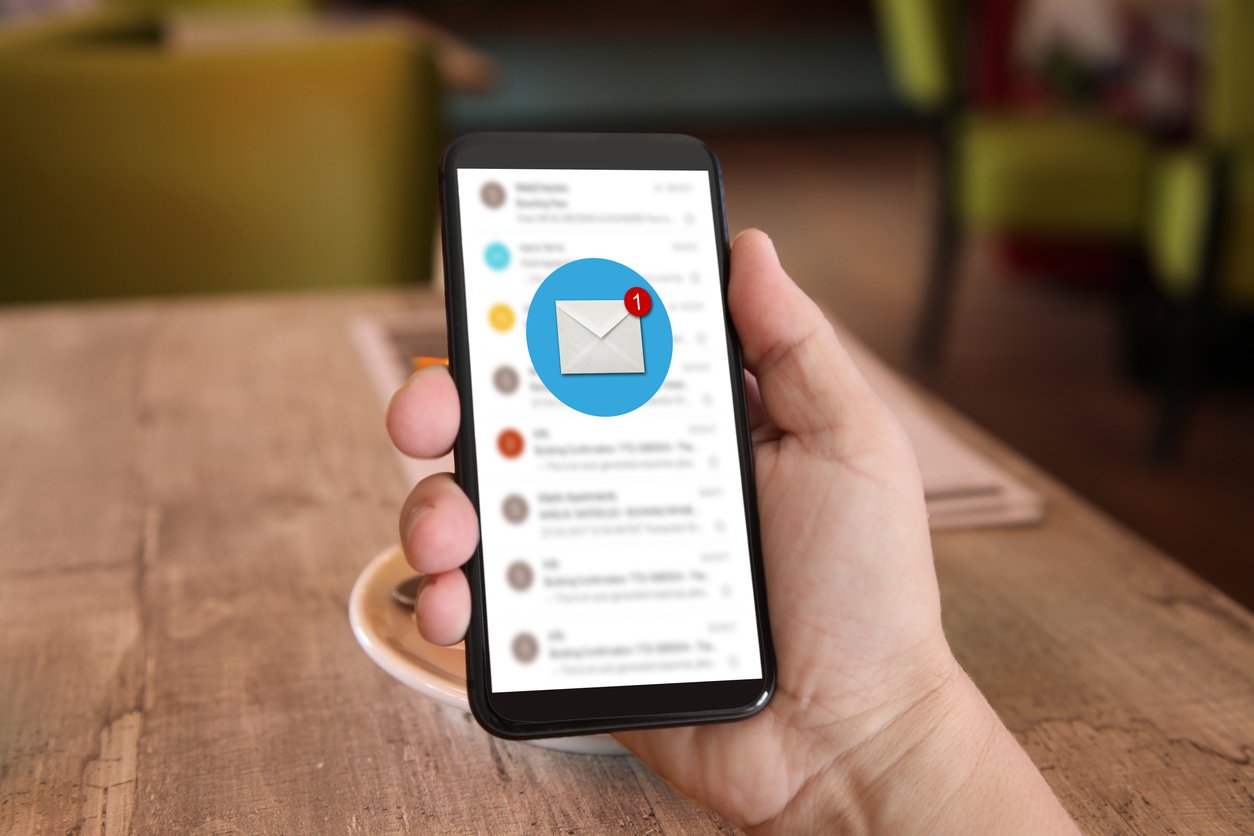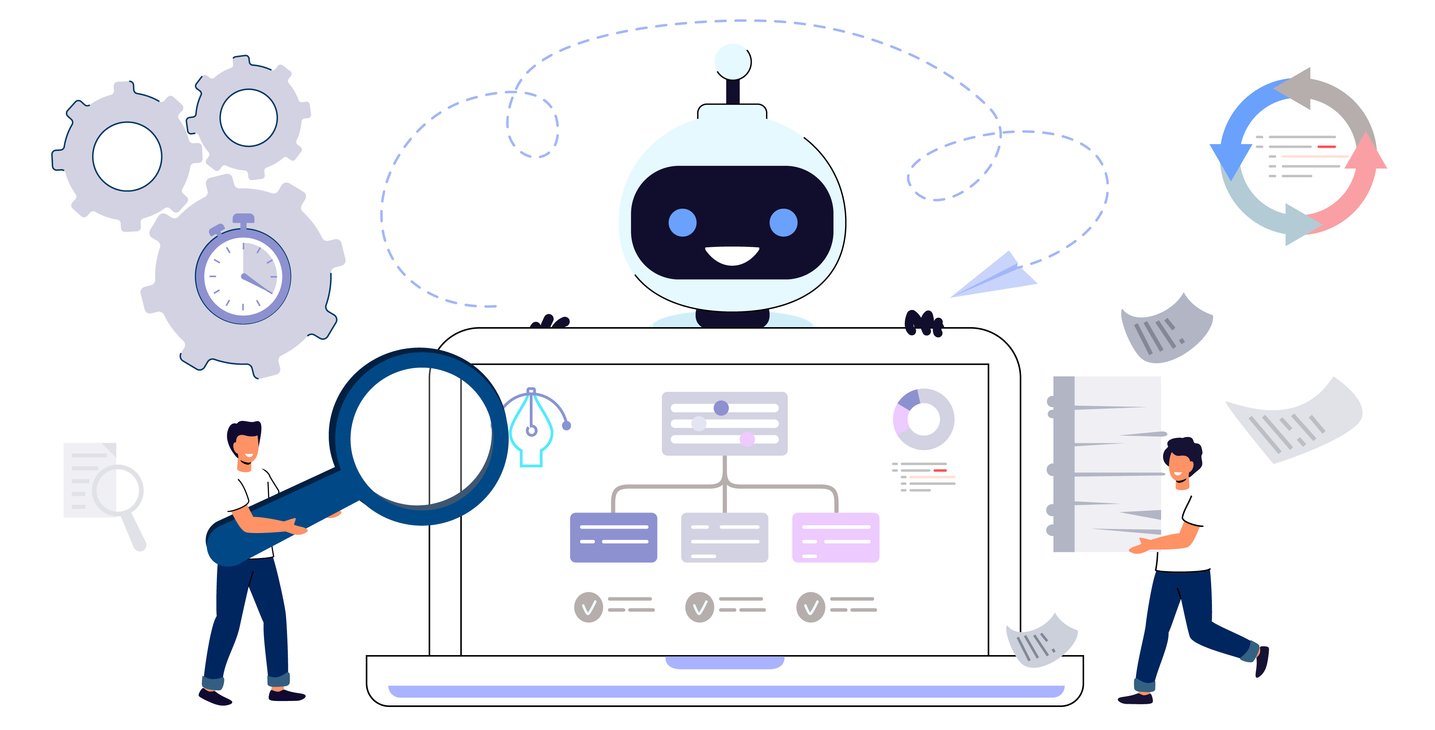
10 Best Automation Tools for Sales, Marketing, and Testing
 Updated on
Updated on
 By Bradley Kovacs
By Bradley Kovacs
Bradley Kovacs
Bradley has been passionate about technology since childhood, starting with Microsoft Flight Simulator at age six. In college, he automated his data e...
learn more
Bradley Kovacs
Bradley has been passionate about technology since childhood, starting with Microsoft Flight Simulator at age six. In college, he automated his data e...
Table of Contents
Table of Contents
You've got leads to chase, campaigns to launch, and bugs that love showing up five minutes before a deadline. But instead, you're stuck repeating the same mind-numbing tasks over and over like it's Groundhog Day.
Automation tools can take those tasks off your plate.
They keep your entire operation humming while you focus on what actually matters. Sales follow-ups? Handled. Marketing workflows? Done. Testing your product without breaking your brain? Easy.
In this guide, we're giving you the inside scoop on the best automation tools across sales, marketing, and testing.
Business Process Automation Tools

Business process automation tools run tasks behind the scenes so teams don't waste time on handoffs, follow-ups, or updates.
They move work between people and systems based on rules you set.
What Are Business Automation Tools
Business automation tools execute operational tasks based on predefined rules. They remove the need for people to manually trigger processes, follow up, or monitor status at every step. You define the logic. The tool runs it every time, without deviation.
They connect systems, manage dependencies, and reduce the margin for error. That includes routing leads, processing approvals, updating records, sending notifications, or triggering next steps based on user behavior.
It's why 31% of businesses have fully automated at least one function.
Use Cases for Business Process Automation Tools
- Score, route, and follow up with leads automatically—no inbox checking required.
- Send onboarding docs, assign internal tasks, and update trackers the moment a deal closes.
- Generate invoices, log payments, and send reminders without touching a spreadsheet.
- Approve PTO or purchase orders automatically based on policy rules.
- Run post-deployment tests, flag blockers, and sync results back to dev.
Benefits for Small Businesses and Enterprises
|
Team Size |
Benefits of Business Process Automation |
|
Small teams |
Frees up time by removing manual, repetitive tasks, and builds consistency when you're juggling multiple roles |
|
Lean startups |
Adds structure when headcount is low, reduces onboarding time for new hires |
|
Mid-size companies |
Standardizes processes across tools and teams, improves visibility across departments |
|
Large enterprises |
Scales workflows across departments without adding more overhead, reduces dependency on meetings and internal follow-ups, and enforces compliance and audit-readiness |
Marketing Automation Tools for Startups and B2B Brands
Startups and B2B teams run on momentum. You launch a campaign, leads start flowing in, and everything falls apart if your systems don't scale with it. Marketing automation tools fix that by locking in your workflows, handling the follow-up, and keeping every touchpoint on schedule.
Here's how the right setup turns marketing into a repeatable growth engine.
Overview of B2B Marketing Automation Tools
B2B marketing automation tools track behavior, trigger personalized content, and move leads through a defined sequence without manual input. They connect your ads, forms, landing pages, emails, and customer relationship management CRM, so each action leads somewhere specific.
You build a workflow once. Someone downloads a guide, clicks an email, or visits pricing, and the tool responds in real time. It knows what message to send next, when to send it, and who needs to follow up.
Integrating marketing automation tools for lead nurturing and conversions
- Add product demo viewers to follow-ups focused on ROI and features.
- Trigger call-to-action emails for users revisiting your pricing page.
- Send case studies to leads reading security-related blog content.
- Assign high-intent leads to sales reps when engagement spikes.
- Keep cold leads in a lower-touch drip until they re-engage.
Managing Email Automation Tools
Email automation works when the content adapts to the person receiving it. That means dynamic fields, real-time behavior tracking, and workflows that adjust as leads engage with your brand.
You build logic once. If someone opens an email but doesn't click, send them a different angle. If they ignore three emails, shift the sequence or remove them entirely. If they request pricing, notify sales and pause the rest.
Top 10 Marketing Automation Tools

There are tools that look good in a demo, and then there are tools that hold up when you've got 42 tabs open, two launch deadlines, and a sales team asking why the leads haven't been emailed yet.
These top 10 marketing tools belong to the second category.
Ringy

Ringy runs your CRM, email, SMS, and sales outreach in one platform built to move leads through your funnel without extra tools or guesswork. You can build multi-step workflows that control exactly when and how leads hear from you, with every step triggered by behavior, field updates, or rules you define.
You set the pipeline structure. You decide how leads get routed. Ringy handles the logic and executes it automatically—whether that's assigning contacts by region, tracking engagement, or sending the next message in a sequence.
Every call, text, and email is logged to the contact record in real time. You can see what's working, spot what needs follow-up, and move fast without missing context. Marketing and sales stay on the same page because they're working in the same system. Nothing falls through, and every touchpoint is part of a workflow that's built to close.
Let's break down what you get when you trust Ringy as your sales and marketing automation partner:
|
Feature |
The Ringy Magic |
|
Multi-Channel Engine |
Automates outreach across SMS, email, and voice all inside one workflow |
|
Workflow Control |
Lets you build logic based on lead behavior, field updates, and lifecycle triggers |
|
Custom Routing |
Assigns leads automatically based on source, territory, engagement level, or any rule you set. |
|
Live Activity Log |
Tracks every call, text, and email in one timeline tied to the contact record. |
|
Sales + Marketing Sync |
Sales and marketing work in the same system, with shared data and aligned workflows. |
|
Behavior-Based Prioritization |
Flags leads based on actions like clicks, replies, stage changes |
HubSpot

HubSpot operates as a unified platform where marketing, sales, and customer success share one CRM and one automation engine.
The workflow builder allows you to trigger actions based on nearly any input, including form submissions, page visits, campaign engagement, ad clicks, lifecycle stage, or custom property changes. These workflows can send emails, assign leads, enroll contacts in sequences, update fields, and notify internal teams, all from a single process.
HubSpot's native tools, such as email composer, landing page builder, ad manager, and CMS, are all tied directly into the automation logic, which allows campaigns to respond instantly to user behavior across multiple touchpoints.
You can build workflows that personalize content dynamically based on contact data and behavior, and run split tests on message variants or entire flows.
Mailchimp

Mailchimp mainly focuses on email-based workflows and structures its features around that core use case. It does, however, include enough automation structure to support full customer lifecycle communication for small to mid-sized businesses.
You can create rule-based journeys that react to signup forms, email activity, purchase behavior, or custom list segments. Each contact proceeds through the workflow in a linear or branched path depending on their interaction history and assigned tags or attributes.
Mailchimp also includes list segmentation tools that support dynamic groups based on location, purchase frequency, engagement scores, or ecommerce events. You can build automations using a visual editor with time delays, conditional steps, and message variants.
Mailchimp also integrates directly with ecommerce platforms such as Shopify and WooCommerce. This allows you to send cart recovery emails, post-purchase flows, or browse abandonment messaging based on product-level behavior.
ActiveCampaign

ActiveCampaign offers a full-featured automation platform that includes CRM integration, lead scoring, conditional logic, and real-time user behavior tracking. Its automation builder allows users to map out multistep workflows that can include internal tasks, deal stage updates, content personalization, email delivery, and contact segmentation based on any combination of user actions or data fields.
The platform also supports custom objects, event tracking, and site tracking, which enables workflows to respond to non-email-based engagement across web properties and applications.
ActiveCampaign's CRM is embedded in the same environment as its marketing tools, so sales and marketing teams can trigger automation events from either side without syncing separate systems. Workflows can reference lead scores, account-level properties, or user-defined events to control when contacts advance to the next stage or exit a sequence.
Marketo

Marketo, now part of Adobe for Business, is great for enterprise teams managing multi-touch, long-cycle marketing across multiple channels. It allows you to create detailed engagement programs that automate messaging, lead nurturing, scoring, and segmentation based on user behavior, firmographic data, and CRM integration.
Campaigns can trigger from form fills, email interactions, site activity, or custom field updates, and can be linked to revenue models for direct attribution.
The logic system supports nested flows, dependency management, and audience transitions between workflows based on specific criteria, making it suitable for complex lead routing scenarios or region-specific marketing.
Marketo integrates tightly with Salesforce and other CRMs. This enables bi-directional data syncs that update lead status and pipeline stage as prospects interact with content.
Pardot

Pardot, now branded under Salesforce Marketing Cloud Account Engagement, is for B2B organizations that need to align marketing automation directly with Salesforce CRM. It enables you to automate email campaigns, lead scoring, grading, segmentation, and activity tracking based on Salesforce fields and user engagement.
You can define workflows in Pardot through Engagement Studio, where you build visual sequences that respond to prospect behavior and CRM signals in real time.
Also, you can trigger campaigns by form submissions, file downloads, or email interactions, and can update Salesforce lead records, assign contacts to sales reps, or adjust custom fields for further segmentation. And Pardot includes grading models that assess lead fit alongside behavioral scoring, which helps marketing teams refine qualification rules before routing leads to sales.
Moosend

Moosend offers a compact but capable automation engine that supports multi-step workflows tied to email, ecommerce behavior, and subscriber actions. You can create sequences using a visual editor that includes triggers for site visits, product views, form submissions, or purchase events.
The platform allows for filtering based on user attributes or engagement history and can execute actions such as sending emails, applying tags, or moving contacts between lists.
Its ecommerce integrations include support for real-time product recommendations, abandoned cart recovery, and post-purchase flows that reflect SKU-level data.
Brevo (Sendinblue)

Brevo, formerly Sendinblue, provides marketing automation, transactional email, and SMS capabilities within a single platform. The automation system allows users to define workflows that respond to email activity, contact form interactions, custom field values, or purchase behavior.
These workflows can include delays, conditional splits, and cross-channel messaging, making the platform suitable for lifecycle marketing programs, transactional flows, and event-triggered campaigns.
In addition to its automation features, Brevo includes built-in email deliverability tools, campaign reporting, and contact segmentation. It also offers an API that supports integration with external systems. And you can trigger SMS automations alongside email workflows to support time-sensitive campaigns or multi-channel engagement.
Klaviyo

Klaviyo is specifically for ecommerce brands that require data-driven automation tied directly to customer behavior.
The platform connects to storefronts like Shopify, BigCommerce, and WooCommerce to pull in product-level data, purchase history, and browsing activity. You can build workflows triggered by cart abandonment, repeat purchase timing, product views, or changes in customer lifecycle stages.
Klaviyo supports dynamic segmentation that updates in real time, so you can target audiences based on behavior, order value, or customer lifetime metrics. The automation engine allows for branching logic, email personalization based on product data, and triggered SMS or email sends depending on user actions.
GetResponse

GetResponse combines email automation, list management, landing pages, and webinars in one system. Its automation builder supports behavior-based sequences that respond to email opens, clicks, form submissions, or URL visits.
Each workflow can contain decision nodes, scoring updates, tag management, and time-based triggers that guide how contacts progress through the funnel.
The platform includes a visual funnel builder that connects landing pages and automated email sequences into a single campaign structure, making it suitable for webinar registration flows, gated content delivery, and product launches.
Workflow and Process Automation Tools

Workflow and process automation tools create structure across repetitive tasks and disconnected systems.
Instead of relying on people to push data, send updates, or track progress manually, these tools execute rules you've already defined.
They handle communication between platforms, enforce timing, and reduce the risk of dropped handoffs across your operation.
Best Workflow Automation Tools
Workflow automation tools link cloud-based software together so that actions in one system trigger activity in another.
Companies use them to create sequences like sending follow-ups after a form submission, updating CRM records based on email engagement, or generating invoices from closed deals.
These tools support conditional logic, basic data mapping, and multi-step flows across commonly used platforms.
Some examples include:
- Zapier: Zapier connects over 6,000 apps and offers a flexible builder that supports filters, branching paths, and delay steps. It handles most one-to-one and one-to-many workflows across tools like Google Sheets, Slack, HubSpot, Airtable, and more. Teams use it to automate marketing handoffs, sync databases, assign tasks, and build customer communication flows without writing code.
- Integrately: Integrately simplifies setup with one-click automation templates that cover thousands of app pairs. It offers branching logic and step-by-step customization through a user-friendly interface. It works well for teams that want to launch automations quickly and maintain visibility without dealing with complex workflow builders.
Intelligent Process Automation Tools for Scaling Operations
When your operations start to scale, you need systems that can move data, trigger actions, and enforce logic across tools without human input.
Intelligent process automation tools take multiple disconnected steps, like form submissions, notifications, database updates, and task creation, and connect them into a single automated flow.
Here are some examples of intelligent process automation tools:
- Make: Make (formerly Integromat) offers a visual editor that supports looping, conditional paths, data transformation, and modular logic across workflows. It handles detailed processes such as syncing product data between systems, assigning leads based on multi-variable logic, and tracking multi-step approvals. Make is well-suited for teams managing infrastructure-level automation across marketing, ops, and support.
- Nintex: Nintex supports structured business process automation, including form-based data collection, approval routing, document generation, and compliance-ready process mapping. It integrates with systems like SharePoint, Salesforce, and Microsoft 365 and is typically used in organizations that need traceable logic, role-based access, and enterprise-level control over process outcomes.
Automation Testing Tools for QA and Dev Teams

Automation testing tools give QA and dev teams a way to define test logic once and run it on demand or on every deployment.
Whether you're validating core features, preventing regressions, or tightening up your CI/CD pipeline, these tools make it possible to test at scale.
Automation Testing Tools Overview
Automation testing tools run prewritten test cases without manual input, so you can catch bugs, validate features, and push code with confidence. They check your app's behavior in real time across browsers, devices, APIs, or whatever else your users touch.
Instead of clicking through the same flows again and again, your team defines the logic once. The tool runs it on every build, flags anything that breaks, and gives you a clean pass/fail result to act on. They fit straight into your CI pipeline and scale with your releases.
Codeless Automation Testing Tools and Their Advantages
- Build and run tests without writing or maintaining code.
- Handle flaky selectors and UI changes with self-healing logic.
- Track coverage and failures in real time across browsers and devices.
- Let non-developers contribute to test coverage.
- Integrate tests into CI/CD without adding complexity.
Tools like Testim and Katalon give you visual control over test structure while handling the hard parts (e.g., element detection, test retries, and reporting) under the hood.
Codeless Test Automation Tools vs Traditional Scripting Tools
Codeless tools are faster to launch. Scripting tools give you full control.
If your UI is stable and your team needs to scale test coverage quickly, codeless works. If you need to validate APIs, mock data, or test logic-heavy workflows, scripting is a better choice. Codeless tools handle the basics, such as signups, logins, and cart flows.
Tools like Selenium cover the edge cases, backend logic, and anything too complex for a drag-and-drop editor.
Most QA teams use both. High-volume tests run codeless, while high-complexity tests run in code.
No Code and Codeless Automation Tools
No code automation tools let teams build and launch workflows without writing a single line of code. Whether you're automating lead routing, task creation, onboarding sequences, or app integrations, these tools let you drag, drop, click, and publish.
That means faster deployment, lower dev dependency, and more room for your technical team to focus on the work that actually needs code.
What are No Code Automation Tools
No code automation tools are platforms that let users build automated workflows using visual interfaces instead of programming languages.
You create logic by choosing triggers, defining conditions, and setting actions using dropdowns, toggles, or drag-and-drop builders.
These tools often come with prebuilt templates and native integrations, so setting up common workflows (e.g., sending follow-ups, updating records, or syncing data across platforms) can happen in minutes.
Advantages of Codeless Platforms for Non-Technical Teams
Codeless automation tools give non-technical teams the ability to build, manage, and scale workflows without waiting on developers. Here's what that unlocks:
- Faster iteration: Teams can launch and refine workflows in hours instead of waiting through dev queues or sprint cycles.
- Less technical dependency: Operations, marketing, HR, and support can own their own systems without needing to learn a programming language.
- More agility: Changes in process or structure can be made directly by the people closest to the work, which speeds up execution and reduces miscommunication.
- Better alignment: Teams can build automations that reflect how they actually work day-to-day, not how someone else imagined the workflow on a spec sheet.
- Improved visibility: Most codeless platforms include dashboards, logs, and alerts, so non-technical users can track what's working and fix what's not without pulling in IT.
Key Factors to Consider When Choosing the Best Automation Tools

The best automation tools should fit your team, your systems, and your pace of work. These are the core criteria to focus on when making the right choice:
Learning Curve
Your team should be able to launch workflows without reading the manual cover to cover. A steep setup process slows everything down and kills adoption before it starts.
Scalability
Your automation system should handle more users, more logic, and more volume without losing speed or breaking workflows.
Support and Pricing
When something breaks, support needs to respond fast. And the pricing model should reflect real usage, not limit your team's growth.
Final Thoughts on Automation Tools
Automation solves operational drag. It keeps systems consistent, eliminates busywork, and gives teams time to focus on tasks that require actual decision-making.
Not sure which solution to focus on first?
Start with tools that match your current process. If you're routing form submissions, managing outbound follow-ups, or tracking regressions, pick tools that handle those specific workflows well. You don't need to automate everything on day one. Build the systems you need now, and expand as your process matures.
Platforms like Ringy integrate with common automation tools to close gaps between marketing and sales.

Skyrocket your sales with the CRM that does it all.
Calling? Check. SMS? Check. Automation and AI? Check. Effortlessly keep in touch with your customers and boost your revenue without limits.

Take your sales to new heights with Ringy.
Sales in a slump? Ringy gives you the tools and flexibility you need to capture leads, engage with them, and turn them into customers.
Subscribe to Our Blog
Enter your email to get the latest updates sent straight to your inbox!
Categories
Related Articles






































































